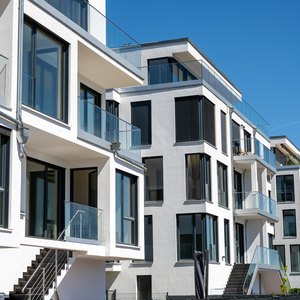
Over the last decades, thousands of newbie investors dove into real estate only to get out of it a short time later. Often, it turned out to be a lot more work than advertised. In fact, to successfully rehabilitate properties demands that the investor steadily network, persistently scout, negotiate with contractors as well as bob and weave with market forces.
Rather than acquiring and selling, some have found profits in simply procuring and conveying the right to purchase, known as controlling the contract. This can be accomplished quickly and favorably.
Looking for Profits in Property
There are many ways to make money with real estate investments. Wholesaling is a very common method that can yield substantial profits if done with restraint in terms of inputs and with a sensitivity to local markets. Another avenue for income from property is to hold an asset for rental revenue, such as becoming a landlord. Again, care must be exercised as to how much money is spent improving the house or building so that it can command higher rents.
A [real estate investment trust](https://www.investor.gov/introduction-investing/investing-basics/glossary/real-estate-investment-trust-reit#:~:text=Real%20estate%20investment%20trusts%20(%E2%80%9CREITs,real%20estate%20or%20related%20assets.) (REIT) is a vehicle whereby an investor purchases ownership in the trust which, in turn, manages a portfolio of income properties. This is attractive since the investor avoids direct ownership. Such an advantage also rests with controlling contracts.
Read More: Buying a Home: The Process
Control Without Ownership
While successful wholesalers and rehabbers flip houses and buildings, newbies to investing may feel more comfortable flipping sales contracts. The key to making the deal work is the option, which occurs when the investor signs a contract with an owner that conveys to the former the right to buy the house at a later date.
This is loosely akin to investing in stock options or commodity futures, in which the transaction centers more on control than actual possession. Thus, the owner is not deeding the property but instead giving the investor the first claim within a given time frame.
Read More: What Does Flipping Houses Mean?
The Sequence of the Transaction
1. Like any wholesaler, the contract investor must first locate a suitable property with a motivated seller. Ideally, "motivated" means more than a mild desire to sell. There is a sense of urgency involved. The seller might be facing a foreclosure or a distant job opportunity where time is of the essence.
Distressed properties will appear in recorded documents available at the county courthouse. Other opportunities can be discovered through steady networking.
2. Once the optimal house or building is identified, the investor can negotiate contract terms with the owner. Since the owner and investor come to the transaction with different interests, negotiations can get intense. Making sure that the terms are clear and unambiguous will avoid future ugliness.
Absolutely essential is that the contract gives room for the investor to assign it to another buyer. Only when both sides have agreed should the contract be executed.
3. With the signed contract for selling a house by owner in hand, the time has come to recruit a buyer. Actually, a seasoned investor will already have one or two parties lined up, or at least spoken to, by this point. Assembling a pool of interested buyers is a good way to strengthen your position. Again, networking and sound marketing practices can help you develop such a list of prospects.
4. With a buyer commitment, the investor can refer the purchaser to a settlement agent. This business will perform all the necessary title searches to clear the property to close. Then, the final contract between seller and buyer is consummated at which point a closing is scheduled.
References
Tips
- Purchase distressed properties in areas that have high resale value and homes that sell quickly. Have a realtor help you set a fair market price and help you market the property.
Writer Bio
Adam Luehrs is a writer during the day and a voracious reader at night. He focuses mostly on finance writing and has a passion for real estate, credit card deals, and investing.

